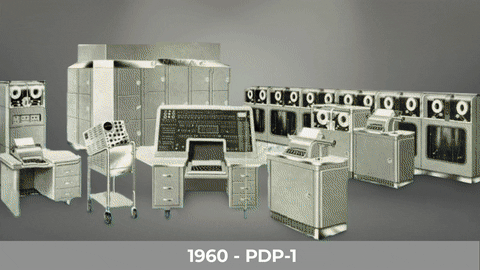Questions about products? Bulk orders?
 Call 888-654-3376
Contact us!
Call 888-654-3376
Contact us!

From the 17th century binary system to IBM’s quantum computing mega machine, computers have come a long way since the early days. The universal language of computers, the binary system, was developed by German philosopher Gottfried Wilhelm Leibniz centuries before there were any machines to use it. The first mechanical computers were developed by English mathematician Charles Babbage in the early 19th century, but it wasn’t until 1936 that there was a unified theory on what a general-purpose computer ought to do (outlined by Alan Turing in his paper “On Computable Numbers, with an Application to the Entscheidungsproblem”). It took the transition from vacuum tubes to transistors in 1947 for the first modern computers to start looking like the commercial products we now know, an invention that would win its co-creators the 1956 Nobel Prize in physics.
That discovery helped kick off Project Whirlwind, a collaboration between MIT and the U.S. Navy which developed ENIAC, a computer that relied on a magnetic core memory, ran 1,000-times faster than any previous computer, and did more calculation in ten years than the whole of humanity up to that point. But the first commercial computer to attract widespread attention was the UNIVAC-1, which achieved national fame for predicting Dwight D. Eisenhower’s landslide victory.
Commercial computers since then were developed to be smaller, faster, and smarter, from the 1964 IBM System (the first family of computers to cover the full range of applications) to the 1977 TRS-80 (one of the first personal computers to hit the market) to the 2003 Apple Power Mac G5 (the world’s first 64-bit desktop) to the 2019 Apple Mac Pro (delivering a 28-core Intel Xeon processor that would make its ancestors cry). And with new developments in computer technology happening all the time, we’re still learning just how powerful computers can be.
Here are the models included in the animation:
Images from: Computer History Museum, Timetoast, Living Computers: Museum + Labs, National Museum of American History, Retro Viator, Computerworld, The Interface Experience, Wikipedia, PCMag, Slashgear, Pocketlint, Tomsguide, EETimes